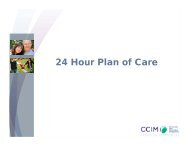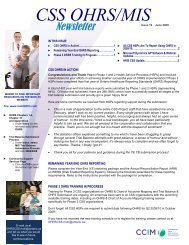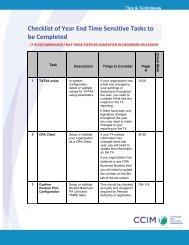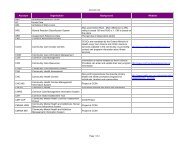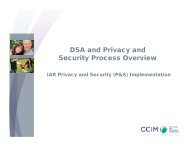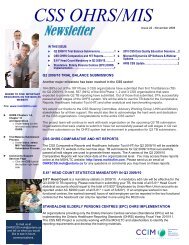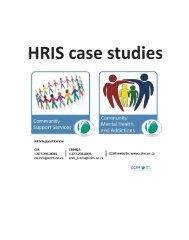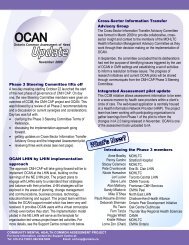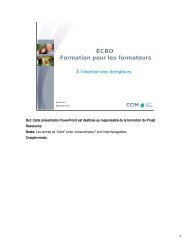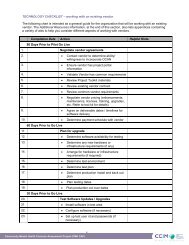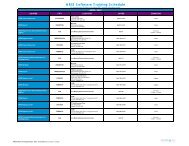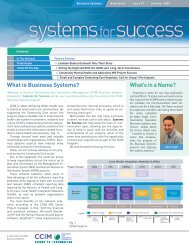RAI-MDS 2.0 Nutritional Care Resource Guide April 2011 - CCIM
RAI-MDS 2.0 Nutritional Care Resource Guide April 2011 - CCIM
RAI-MDS 2.0 Nutritional Care Resource Guide April 2011 - CCIM
- No tags were found...
Create successful ePaper yourself
Turn your PDF publications into a flip-book with our unique Google optimized e-Paper software.
Criteria to Review4. Evidence of <strong>RAI</strong> Practice Requirements Implementation Present NotPresentB Where a significant change in the resident’s health status has resulted inthe completion of an interdisciplinary assessment, then theinterdisciplinary assessment may replace the quarterly assessment forthat quarter.C The <strong>RAI</strong>-<strong>MDS</strong> <strong>2.0</strong> assessment instrument is a primary source document: With the exception of medical diagnoses, test results or examinations,physician orders, and advanced directives, duplicate documentationis not required to support all <strong>RAI</strong>-<strong>MDS</strong> <strong>2.0</strong> assessment items Information comes from multiple sources: observations, review ofclinical records, plans of care, interviews with the resident, significantothers, team members <strong>RAI</strong>-<strong>MDS</strong> <strong>2.0</strong> assessment and <strong>RAI</strong> outputs identify actual andpotential resident care needs and provide the evidence on which tobase decisions relating to care planningD For quarterly <strong>RAI</strong>-<strong>MDS</strong> <strong>2.0</strong> assessments, the following standardstatement may be used for “existing” triggered RAPs that have no clinicaland / or care plan changes.PartialThis is an existing RAP. The resident is responding to the interventionsas outlined in the care plan. His / her clinical assessment has notchanged from the last assessment. <strong>Care</strong> plan goals and interventionshave been reviewed by the care team members and continue to beeffective in (preventing, improving or maintaining) the RAP problem.EF For significant change in status assessments that do not take theplace of the full annual assessment, the standard statement may beused For the initial admission and annual full assessments, no standardstatement will be used for existing RAPsOnce a year, all RAPs must be reviewed and treated as new and nostandard statement may be usedThe RAPs assessment summaries and plan of care for triggered RAPsmay be combined if the goals of care, risk factors, care interventions, andtreatments are all interrelated.The use of other assessment tools, in addition to <strong>RAI</strong>-<strong>MDS</strong> <strong>2.0</strong> shouldonly be necessary following the <strong>RAI</strong>-<strong>MDS</strong> <strong>2.0</strong> assessment and ResidentAssessment Protocols (RAPs) analysis when clinicians, based on theirclinical judgment, make a decision to make a referral and/or conductfurther assessment for the development of a comprehensive residentplan of care.5 Linkage of <strong>Care</strong> Plan Interventions to RAPs AssessmentSummariesA Evidence of plan of care interventions reflecting the RAPs triggersB Evidence of referral follow upC Evidence of ongoing care plan interventions evaluationFor Information: 416.327.7625 35ltchrai@ontario.ca35



